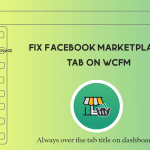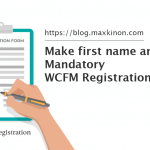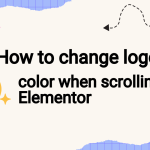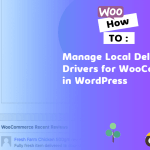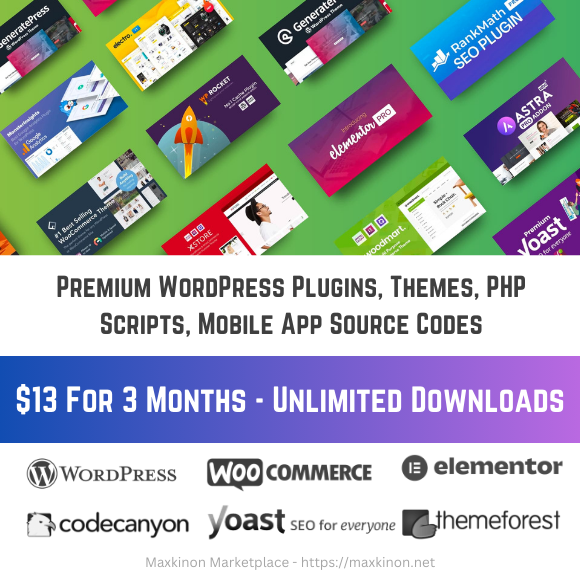Another post:
- How to animate shape divider in elementor
- 5 Reasons Why You Should Not Use Nulled WordPress Themes and Plugins
- Debug WordPress, the right way
- Most common HTTP error codes explained and how do you troubleshoot them
- How to change logo color when scrolling in Elementor
- Create animated gradient background with elementor
Introducing Elementor Blocks for Gutenberg
Checkout another Author Post: Genesis Framework vs Divi: The Ultimate Comparison 2021
- Trying to choose between Divi vs Elementor?As these are two of the most popular WordPress page builder plugins, I don’t think you’re necessarily going to go wrong either way.However, there are definitely some important features and pricing differences between Elementor and Divi that might push you to go one way or the other.That’s what I’m going to try and help you discover in this post. I’ll start by digging into the features that are largely the same between Elementor and Divi. Then, I’ll highlight the opposite and look at what’s different.
To finish things out, I’ll compare performance and pricing, two other important considerations beyond the feature list.
Ready to begin? Let’s start comparing.
Divi vs Elementor: What’s the Same
These two page builder plugins are both at the top of the game, so let’s start by comparing what both have mostly in common. Obviously, there are still smaller feature differences here and there, but these are the core features that you’ll get no matter which plugin you choose.
Visual, Drag-and-Drop Interfaces
Let’s start at the most basic level — the interface.
Both Divi and Elementor give you visual, drag-and-drop interfaces with inline editing.
That is, you’ll be able to design your page while seeing exactly what your visitors will see, and you can edit text by just clicking and typing on the page.
With Divi, you get a full-width editor with no fixed interface elements from Divi, beyond a single button at the bottom that expands some options when clicked.

To add and configure modules, you’ll use the floating buttons that appear when you hover over your design:

The different colors represent different types of modules.
To configure individual modules, you’ll then use the settings popup. You can resize the popup and move it around with drag-and-drop, which is a nice feature.
Elementor, on the other hand, uses a fixed sidebar on the left that’s always visible. This doesn’t create quite as immersive of a design experience, but I personally find it more convenient to be able to interact with a fixed sidebar vs using floating buttons that pop in and out of existence for everything (as is the case with Divi):

To configure a widget or section, you can click on it to open its settings in the sidebar:

Which is better? Well, I think that really just comes down to personal preference.
Personally, I prefer Elementor’s interface and find it to let me build pages faster/easier. I also find the interface itself to be faster and more glitch-free as compared to Divi. However, that’s just my opinion, and I know plenty of people who prefer using Divi (as evidenced by its popularity).
I think you really just need to test both, as it’s impossible for me to declare a definitive winner for something that’s subjective.
Detailed Style Options
Both Divi and Elementor are two of the better WordPress page builder plugins when it comes to the design and style options that you get access to.
Of course, there are some small differences here and there. But in general, both offer more style and design options than the average WordPress page builder plugin.
I’m not sure how to do an objective comparison here because there are so many small features that go into “style and design”. But some of the more notable features that both offer are:
- Shape dividers
- Custom spacing
- Custom positioning for modules
- Animation effects such as parallax scrolling
Responsive Design Settings
With both Divi and Elementor, any designs that you create are responsive by default. That is, your designs will automatically work on computers, tablets, and smartphones.
Both also take things one step further, though, and also let you customize the responsive settings for your designs.
For example, both Divi and Elementor let you use different style settings based on visitors’ devices. You can also hide certain modules depending on visitors’ devices, such as hiding a large image on mobile devices.
Theme Builder Functionality
Both Divi and Elementor are no longer limited to just one-off page content — they also let you design your entire WordPress theme using the same visual, drag-and-drop interface.
Elementor released theme building first, while Divi recently added this feature with Divi 4.0.
So what is theme building?
Essentially, theme building eliminates the need for a WordPress theme by letting you design your entire WordPress theme using a drag-and-drop page builder. For example, you’ll be able to build templates for your:
- Header
- Footer
- Single posts and pages (for example, an individual blog post)
- Archive pages (for example, the page that lists all of your blog posts)
Beyond dynamically including native WordPress information such as a blog post’s title, you can also use both plugins’ theme builders to insert information from custom fields.
With Divi, you can arrange your different theme template parts using a back-end interface like this:

To actually build your theme template parts such as your header, you’ll use the front-end visual builder. You can use the dynamic content feature to insert site information like your site title and tagline:

With Elementor, you’ll jump right into the visual builder to design your theme template part. You’ll also get some dedicated widgets for the template part, along with a dynamic content feature that you can apply to any widget:

Once you publish your theme template, you can choose where to apply it, for example, only using it for a specific category of posts:

Overall, both theme builders are pretty powerful.
Right-Click Support
Both Divi and Elementor feature right-click support, which is fairly unique among WordPress page builders.
Being able to right-click might seem like a small thing, but it’s very useful for speeding up your workflow. For example, you can quickly:
- Copy styles between widgets
- Duplicate widgets
- Delete widgets
- Save templates
- Etc.
Here’s the right-click menu in Divi:

And here’s the right-click menu in Elementor:

Divi vs Elementor: What’s Different
Now that you know some of the similarities between Elementor and Divi, let’s dig into some of the major differences.
Elementor Has a Popup Builder
One of the biggest feature differences is that Elementor includes its own popup builder tool, while Divi does not.
With Elementor Popup Builder, you can use the same Elementor interface to design popups and display them anywhere on your site.
However, you’re still able to use the full array of Elementor widgets, which means that you can create:
- Email opt-in popups
- Login/registration popups
- Promo/CTA popups
- Etc.

Divi does not include a built-in popup builder like you get with Elementor, though there are third-party plugins such as Divi Overlays that will let you use Divi to design popups.
You also get access to the Bloom email opt-in plugin (our review) with your Divi purchase. It lets you create email opt-in popups, but it’s not nearly as flexible as Elementor Popup Builder because there’s no drag-and-drop builder.
Divi Has Built-In A/B Testing
This is a feature that not everyone will use, but if you’re marketing-focused, you might love the fact that Divi comes with built-in A/B testing to optimize your designs.
By right-clicking on any module, you can quickly spin up an A/B/n test and see how different variants of any module perform. For example, you can try different:
- Headlines
- Buttons
- Images
- Etc.

If you’re planning to build landing pages and such, you’ll probably find this feature to be quite useful.
With that being said, you can A/B test Elementor using third-party solutions such as Google Optimize. There’s also a third-party plugin called Split Test For Elementor. It’s just not as convenient as Divi is.
Divi Comes in Both a Theme and a Plugin Version
Elementor is only a plugin. While the Elementor team does offer its own barebones theme called Hello that’s built to be used with Elementor Theme Builder, Elementor itself is a standalone plugin.
On the other hand, Divi comes in both a theme and a plugin version.
I don’t necessarily know if this is a big pro or con or if it even makes a difference to you… but it’s definitely a difference.
With the Divi theme, you can guarantee that your theme and page builder are perfectly in sync, which has some appeal.
At the same time, though, there are some great third-party themes for Elementor, so it’s not like you can’t get this with Elementor.
Divi Has Layout Packs and More Templates, Elementor Just Has Templates (Mostly)
Both Divi and Elementor include a ton of great-looking templates that you can import, so that part is the same.
However, they go about templates in slightly different ways.
With Divi, you get something called layout packs, which are kind of like themed template kits built for specific niches. For example, if you wanted to build a website for a gym, a Divi layout pack would include multiple templates for:
- Homepage
- Classes page
- About page
- Contact page
- Etc.
Across its 158 layout packs, Divi has an astounding 1,167 different page templates, which is definitely the bigger collection between the two.

Elementor’s templates are, for the most part, just one-off templates. For example, you might find a landing page template or a services page template, but they aren’t necessarily themed together.

Note that Elementor is slowly starting to roll out its own equivalent of layout packs called site kits. However, Elementor currently only has seven site kits, whereas Divi has over 150 layout packs, which is why I still count this as a difference. The Elementor team aims to add one new site kit every month, so over time this collection should grow…but it will still never come close to Divi at that rate.
Elementor Has a Bigger Third-Party Marketplace
One of the great things about both Divi and Elementor is that you can find third-party extensions to further enhance the features in the core plugins.
Even though both page builders have excellent third-party marketplaces, I would have to give the edge to Elementor in this respect.
The fact that Elementor has a free version and, as a result, a larger market share has pushed more third-party developers to create Elementor extensions.
For example, searching “Divi” at WordPress.org turns up 22 pages of results while searching “Elementor” will get you 48 pages of results.
Again, both are quite good and better than your average page builder — I just think Elementor is ahead here.
Divi vs Elementor Performance
To gauge the relative performance between Divi vs Elementor, I created two basic sample pages that use equivalent modules and then ran them through performance test tools to see how things went.
Both sites are using Airi as the base theme and here are the modules that I used:
- Button
- Circle counter
- Testimonial
- Pricing table
The designs are super barebones, but it should give you a good idea of the relative performance of each plugin.
Just to make it clear, I’m using the plugin version of Divi (Divi Builder) with the Airi theme to make this an even comparison. That is, I’m not using the Divi theme.
Here’s how Divi performed:

And here’s how Elementor performed:

I wouldn’t worry too much about the page load times because this is just a one-off test. But here’s how the page size and HTTP requests stack up between Divi vs Elementor:
Page Size HTTP Requests Divi 555 KB 28 Elementor 477 KB 42 So Elementor had a smaller file size, while Divi had fewer HTTP requests.
However, I’m still going to give a slight edge to Elementor because Divi has built-in script optimization which helps explain why it has fewer HTTP requests out of the box. However, you can do something similar with Elementor — you just need a free third-party plugin such as Autoptimize.
That is, if you use Autoptimize (or another plugin such as WP Rocket), you’ll be able to combine Elementor’s scripts to similarly reduce the number of HTTP requests on your site.
So as long as you’re implementing WordPress best practices such as file concatenation with Autoptimize or WP Rocket, I think Elementor is a little bit ahead because it had a smaller page size in my test. Divi still offers solid performance for a page builder plugin, though.
Divi vs Elementor Pricing
As for whether it’s cheaper to use Elementor vs Divi, that depends on how many sites you need to use it on.
First, the elephant in the room: Elementor offers a generous free version, whereas Divi only comes in a premium version.
You can get a lot done with just the free version of Elementor. So if the free version works for you, I think that it’s a no-brainer to choose Elementor over Divi in that case.
If you need access to the premium features, then the situation isn’t quite so clear.
Elementor will be cheaper if you only need to use it on a single site, whereas Divi will be cheaper if you need to use it on multiple websites.
Elementor uses a site-based licensing approach with three options:
- Personal – $49 for one site
- Plus – $99 for three sites
- Expert – $199 for 1,000 sites (essentially unlimited, but capped at 1,000 to prevent abuse)
All those plans are for a one-year license. While you can keep using your current version of Elementor Pro after the first year, you’ll need to renew to continue receiving support and updates.
Divi only has two pricing plans, both of which let you use Divi on unlimited websites:
- Yearly Access – $89 with one year of support and updates.
- Lifetime Access – $249 with lifetime support and updates.
Beyond the fact that both plans let you use Divi on unlimited websites, there’s also another big benefit here.
That price gives you access to all the products from Elegant Themes. This includes the Bloom email opt-in plugin (our review), the Monarch social media sharing plugin, and more.
All things taken into account, Divi Builder is definitely cheaper to use across multiple websites, which might push you in Divi’s direction if it can do everything that you need it to.
On the other hand, if you know that you only need a page builder for a single website, then Elementor Pro will be cheaper at just $49.
Should You Use Elementor or Divi?
Divi and Elementor are two of the top page builder plugins out there, so I don’t think you’ll necessarily go wrong with either.
Instead, I think it comes down to:
- The features that you need. For example, do you think you’ll use the popup builder? Go with Elementor. Do you want built-in A/B testing? Go with Divi.
- Your budget. Elementor Pro will be cheaper if you only need it for a single site, while Divi will be cheaper if you need a page builder for multiple websites.
- Your personal preferences. For example, you might prefer one editor to another, as they both use somewhat different approaches.
What do I personally choose and recommend? I spend all day writing and working with WordPress, so I’d like to think I have some insight here.
Personally, I like (and use) Elementor. I find the free version alone works for a lot of my sites and I prefer the Elementor interface to Divi. The Divi interface feels a little slow compared to Elementor and I personally find it more pleasant to build designs in Elementor because of its speedier backend interface and fixed sidebar approach.
However, that doesn’t mean you’ll agree with me, so I encourage you to:
- Think about whether the feature differences above make a meaningful difference to you.
- Consider how the pricing fits into your budget.
- Play around with each plugin. You can try the free version of Elementor at WordPress.org and Divi has a public demo site where you can play around with the editor.
If you want a more detailed look at either plugin, you can also check out our full Elementor Pro review and detailed Divi review.
Also, here’s a comparison table of all the similarities and differences detailed in this review:
Similarities Elementor wins Divi wins Visual, drag-and-drop interface Has a popup builder Has built-in A/B testing Detailed style options Has a bigger third-party marketplace Comes in both a theme and a plugin version Responsive design settings Has a smaller page size (in my one-off test) Has layout packs and more templates Theme builder functionality Offers a generous free version Has fewer HTTP requests out of the box Right-click support Cheaper for a single website Membership gives you access to all Elegant Themes products Cheaper to use across multiple websites Once you’ve made your choice, you can purchase Elementor Pro or Divi Builder according to your needs.
Do you have any questions about how to choose between Elementor vs Divi Builder? Leave a comment and we’ll try to help.
Check out our categories: Android Update, Elementor, flutter, Guide, Game, Plugin, Theme, webmaster, SEO

